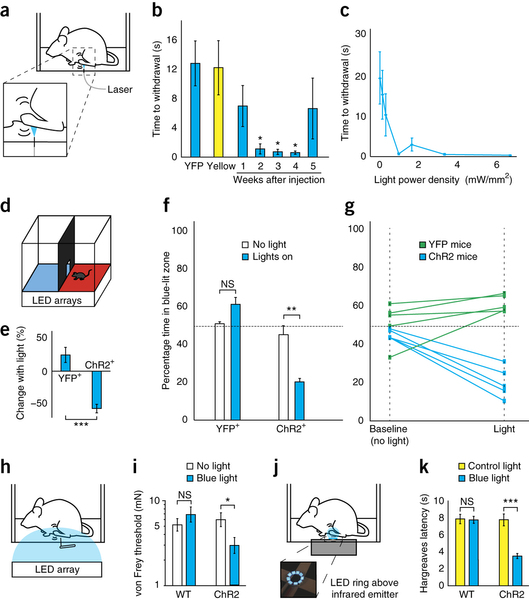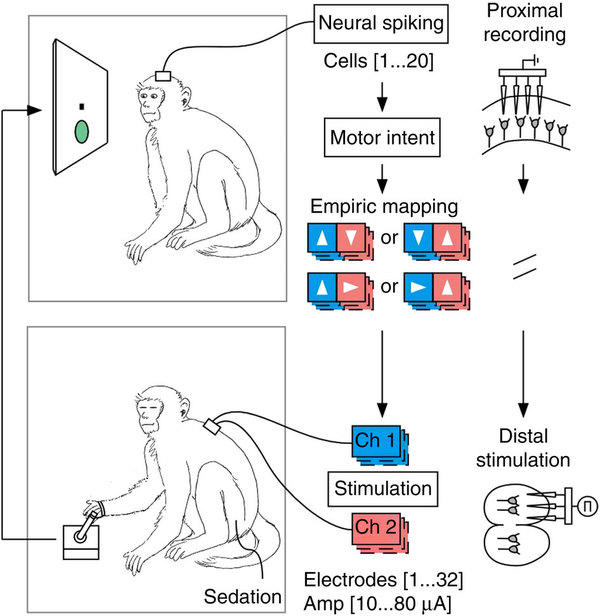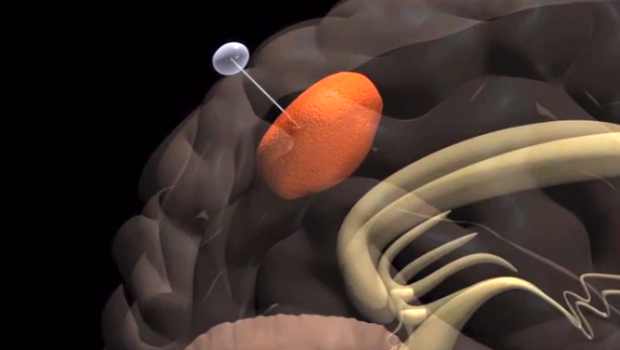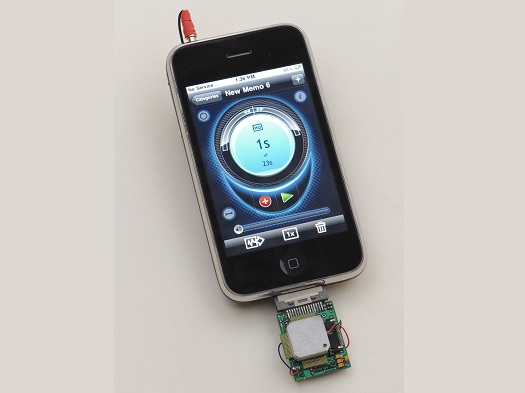Month: February 2014
-

Brain-Kinect Interface for rehabilitation
http://link.springer.com/chapter/10.1007/978-3-658-02897-8_18 John Edison Muñoz Cardona, a Universidad Tecnológica de Pereira student, has developed a Brain-Kinect Interface for rehabilitation. It combines bio-mechanical signals acquired by the Kinect sensor with signals from the Emotiv EPOC headset. The combination of motion capture signals and EEG-based BCI is used for interaction in a rehabilitation game for patients with motor and/or cognitive impairments. The system…
-

Custom fitted, 3D printed, sensor based, implantable cardiac device
Nature paper | Washington University | University of Illinois A custom-fitted, implantable device with embedded sensors, while invasive, may offer an improved method for detecting and treating heart issues. Washington University professor Igor Efimov and University of Illinois professor John Rogers (see previous ApplySci Rogers coverage) have created a 3-D elastic membrane made of a soft, flexible, silicon material that is precisely…
-

Update: Samsung increases health applications with Gear 2 watch, Gear Fit, Galaxy S5
Samsung has updated its devices as it tries to establish dominance in the health and fitness tracking market. Its Gear 2 watch is now based on Samsung’s Tizen operating system rather than Android. It includes an accelerometer and gyroscope – capable of acting as a pedometer and an optical heart rate monitor. This allows the watch…
-

Optogenetics for pain control
http://news.stanford.edu/news/2014/february/biox-numb-pain-021914.html http://www.nature.com/nbt/journal/vaop/ncurrent/full/nbt.2834.html Stanford professor Scott Delp is exploring the use of optogenetics for pain control. He is experimenting with mice with the hope that this research could be used to understand and treat pain in humans. The optogenetics process is invasive, and therefore not suitable for all. The mice are modified with gene therapy to…
-

Cortical-spinal prosthesis directs “targeted movement” in paralyzed limbs
http://www.nature.com/ncomms/2014/140218/ncomms4237/full/ncomms4237.html Cornell‘s Maryam Shanechi, Harvard‘s Ziv Williams and colleagues developed a cortical-spinal prosthesis that directs “targeted movement” in paralyzed limbs. They tested a prosthesis that connects two subjects by enabling one subject to send its recorded neural activity to control limb movements in a different subject that is temporarily sedated. The BMI is based on a set of real-time…
-

Pentagon considers electric brain stimulation for troops
Boston Globe article APA paper The US Air Force has completed 5 studies to investigate if low level electrical stimulation can replace caffeine for fatigued troops who oversee the processing of digital information, including surveillance and drone footage. The research grew out of a recognition that while computers have automated many military functions, humans are…
-

Apple patents health monitoring earbuds
United States Patent 8655004 As the sensor based health monitoring market continues to expand, the USPTO on has granted Apple a patent for a biometric headphone system. By positioning the headset in or near the ear, an embedded activity sensor can measure temperature, perspiration and heart rate data, among other metrics. In addition to skin-based…
-

Perceptual learning training improves vision
http://www.cell.com/current-biology/retrieve/pii/S0960982214000050 Professor Aaron Seitz, Professor Daniel Ozer , and Jenni Deveau at UC Riverside combined perceptual learning approaches to determine if improvements gained from an integrated, perceptual learning based training program would transfer to real world tasks. They found that the brain-training technique significantly improved the vision of baseball players. Before the start of the 2013 NCAA Division 1 baseball season, 19…
-

Study: Nanofibers partially “move” brain tumors to accessible locations
http://www.nature.com/nmat/journal/vaop/ncurrent/full/nmat3878.html http://www.research.gatech.edu/news/researchers-hijack-cancer-migration-mechanism-“move”-brain-tumors Glioblastoma cancers are difficult to treat because malignant cells spread through the brain by following nerve fibers and blood vessels to invade new locations. Professor Ravi Bellamkonda and Georgia Tech and Emory colleagues developed a technique they claim hijacks this migratory mechanism, turning it against the cancer by using a film of thin nanofibers to lure…
-

Chemical sensor app for lung cancer detection
Vantage Health/ STSI Press Release Vantage Health and Scripps Translational Science Institute are developing point-of-care chemical sensor apps. STSI will help validate the sensors, which can detect basic volatile organic compounds by using gas chromatography and mass spectrometry. They intend to use the sensor to detect VOCs commonly associated with lung cancer. Last month Vantage…
-

Cancer cells glow when viewed through surgical glasses
https://news.wustl.edu/news/Pages/26496.aspx Washington University Professor Samuel Achilefu has developed surgical glasses that detect tumors by making cancer cells glow and appear blue in color. This is accomplished through custom video technology, a head mounted display, and a targeted molecular agent that attaches to cancer cells. Tumors as small as 1 mm in diameter could be detected.…
-

Wirelessly charged cochlear implant with no external hardware
http://web.mit.edu/newsoffice/2014/cochlear-implants-with-no-exterior-hardware-0209.html MIT scientists have developed a low power signal processing chip that could lead to a cochlear implant requiring no external hardware. Harvard Medical School and Massachusetts Eye and Ear Infirmary doctors collaborated with the researchers. The implant would be wirelessly recharged and run for eight hours. Instead of an external microphone, the implant would…